Spectral stories
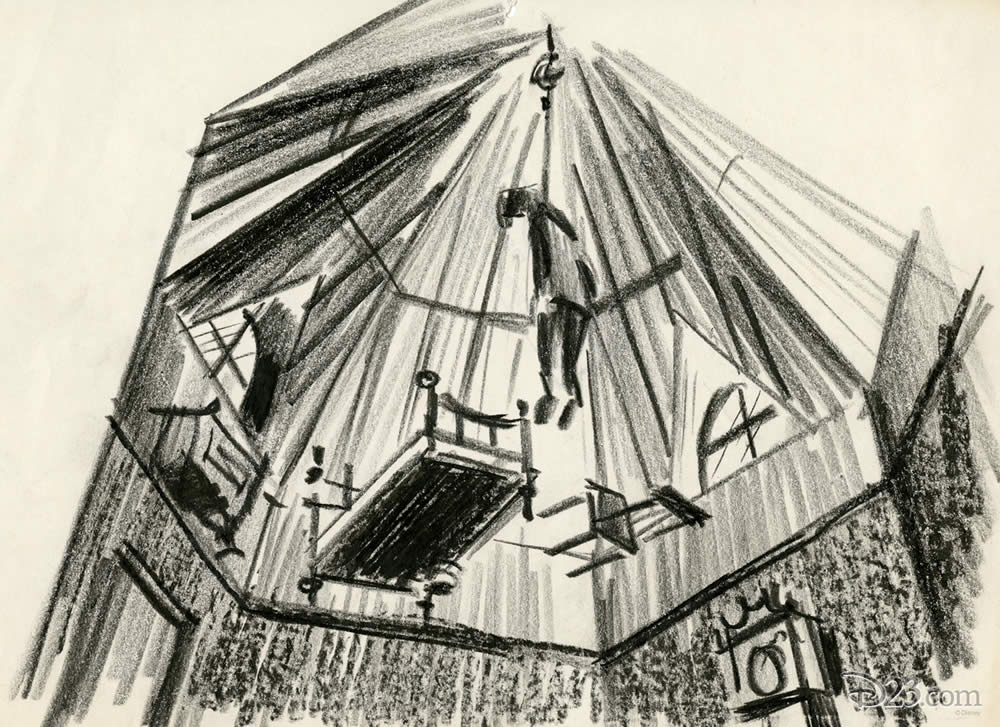
So the seemingly opposing ideas of Claude Coats and Marc Davis had somehow harmoniously converged, and when Disneyland’s Haunted Mansion finally opened on August 9, 1969 (six years after it had first appeared in the park), it was an instant classic. The creepy, unsettling, darkly mysterious introduction (and unforgettable narration by Paul Frees as the “Ghost Host”) and the sing-along “Grim, Grinning” finale of memorable characters and gag-filled scenes somehow created an uneven ride that practically no one thinks of as uneven!
But for all the praise afforded to the Haunted Mansion, there’s one thing it’s often said to be missing… something lorded by Disney Parks spokespeople and Imagineers in every announcement and interview in the last twenty years: story.
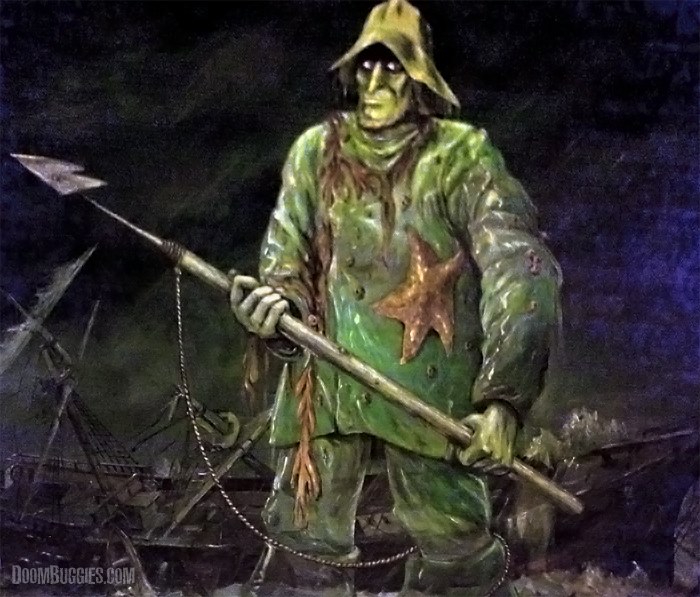
For decades, it’s been argued that the Haunted Mansion has a visceral setting and emotional arcs and deeply beloved scenes, but no narrative to bring it togeher. And indeed, the stretching room (and its unfortunate inhabitant), the ballroom, the bride, and the residents of the graveyard allude to a connected narrative that doesn’t ever seem to connect…
According to legend, explicit “stories” (in the modern Imagineering sense) were floated for the attraction (everything from a vengeful sea captain and his widowed bride to the case of a cursed family) and the animatronic raven positioned in scenes throughout the ride is often cited as evidence that, at one time, designers planned on a continuous narrative and narrator throughout. It’s often said that the idea of a “story” was dropped pretty early on in the ride’s development. Evidently, it’s argued, it was ultimately decided that the mere musings of the disembodied Ghost Host were enough to carry us through the boundless realms of the supernatural and that a traditional narrative would reduce the ride’s repeat appeal.
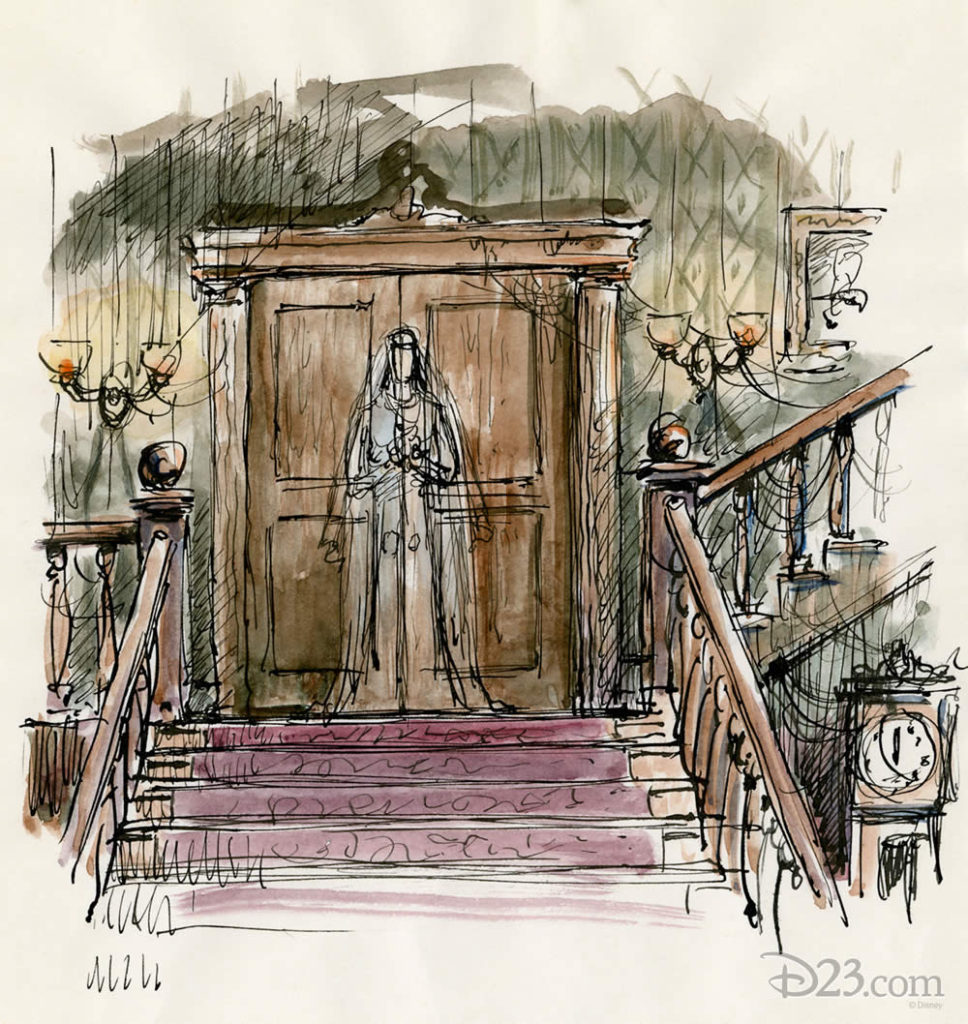
But according to Foxx Nolte’s definitive book on the ride, Boundless Realms, the “story” debate isn’t quite that simple. Notle argues that “Haunted Mansion is a model of narrative economy: it’s the story of how you, played by yourself, entered a haunted mansion and lived to tell the tale. Along the way, you learned that most ghosts aren’t really all that bad. That’s all there is to it.”
Given that lens, the common accusation that the Haunted Mansion is little more than “disconnected vignettes” takes on new meaning. What if the story of the Haunted Mansion is the story of you? Are you seeing things? What will happen to you? Will you accept the Ghost Host’s chilling challenge? Will you tell others what you saw at the risk of sounding mad? Haunted Mansion may not be “plotless” at all; in fact, it may trust riders with one of the most simple yet sensational roles of all: an everyday person trying to make sense of the supernatural.
Despite being the first major project undertaken without Walt’s direction, the Haunted Mansion was instantly recognizable as classic Disney…
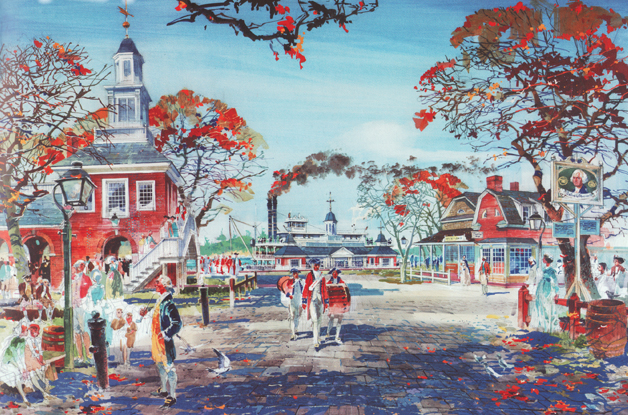
So when designers set to work on an attraction lineup for the new Magic Kingdom park at Walt Disney World, the Haunted Mansion was an obvious choice… but the New Orleans Square it was placed it at Disneyland wasn’t. As the story goes, designers believed that the songs, sounds, smells, and stories of the French Quarter that had been evocative, exotic, and romantic for Californians would feel a little too familiar for Floridians.
Given that the Southern influences of New Orleans were part of Florida’s DNA, too, even an idealized recreation of the South wasn’t “magic” enough for the Magic Kingdom. Instead, the rearranged park would debut with Liberty Square, a 1700s colonial port that would feel more like a fantastic journey for Disney World’s visitors.
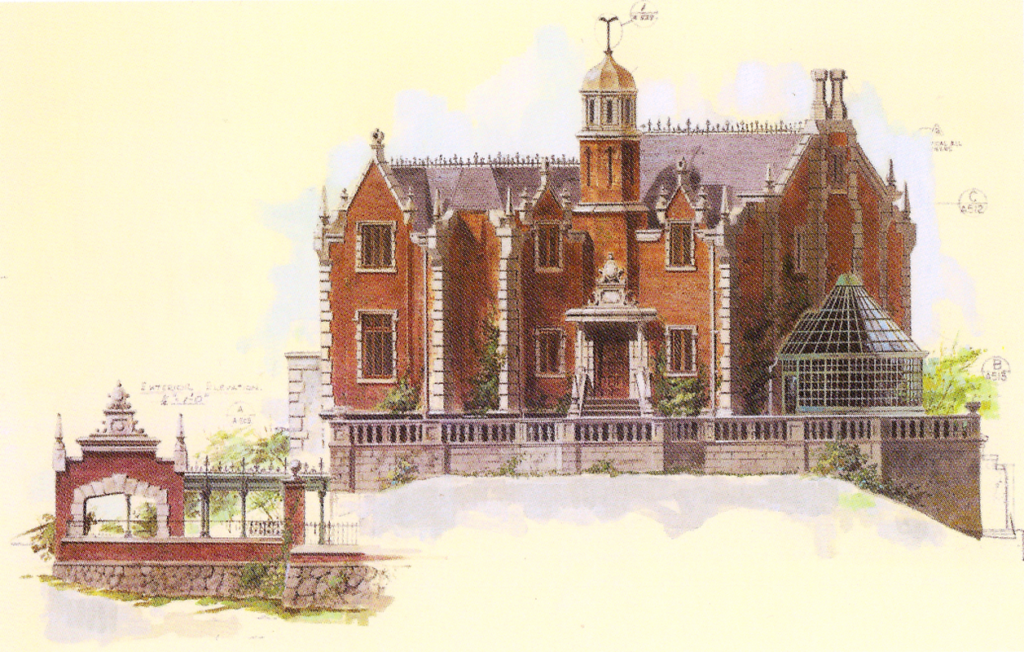
Fittingly, the expanded Haunted Mansion designed for Liberty Square would be placed in a redbrick gothic colonial manor perched on the edge of the Rivers of America – a new setting, and a new style, but ultimately the same ride. But the Haunted Mansion wouldn’t be the only Disneyland classic to make it to Florida…
New generation, new continent
In order to construct Walt Disney World, the footprint of Imagineering in Glendale needed to grow. So in the late ’60s, a “second generation” of Imagineers arrived; a group distinct from Walt’s originals both for not having known Walt personally, and for having experienced Disneyland initially as kids rather than being behind-the-scenes from the start.
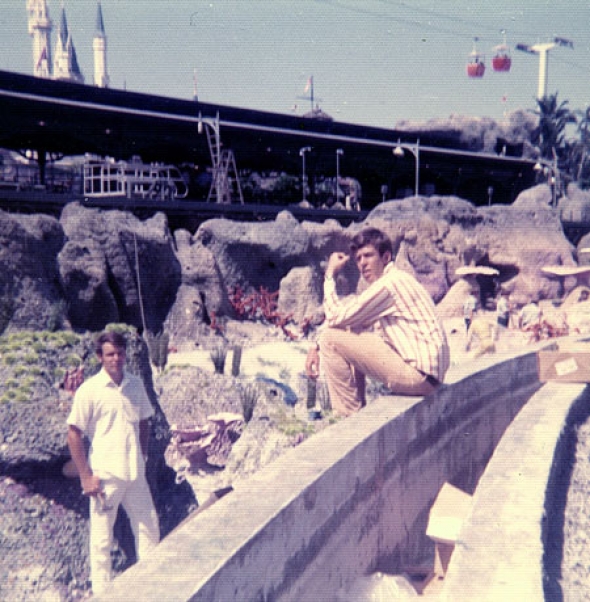
A poster child for this “second generation” was Tony Baxter, who’d worked at Disneyland during college (first as an ice cream scoop, then a ride operator on the park’s Submarine Voyage) only to be invited into Imagineering upon graduation. Though Baxter got his start paired up with the atmospheric designer Claude Coats on adapting Disneyland’s sub ride into Magic Kingdom’s Fantasyland-friendly Lost Legend: 20,000 Leagues, his first solo project remains among his most legendary.
Even by the mid-70s, time was catching up with Disneyland. The park had been built two decades ago, based on the pop culture of another time and another generation. So while folks in the ’50s had been fascinated with Western films – crowding the family around the television to watch The Lone Ranger and spending summers with kids playing “Cowboys & Indians” in the neighborhood – by the ’70s, the era of the Old West was over.
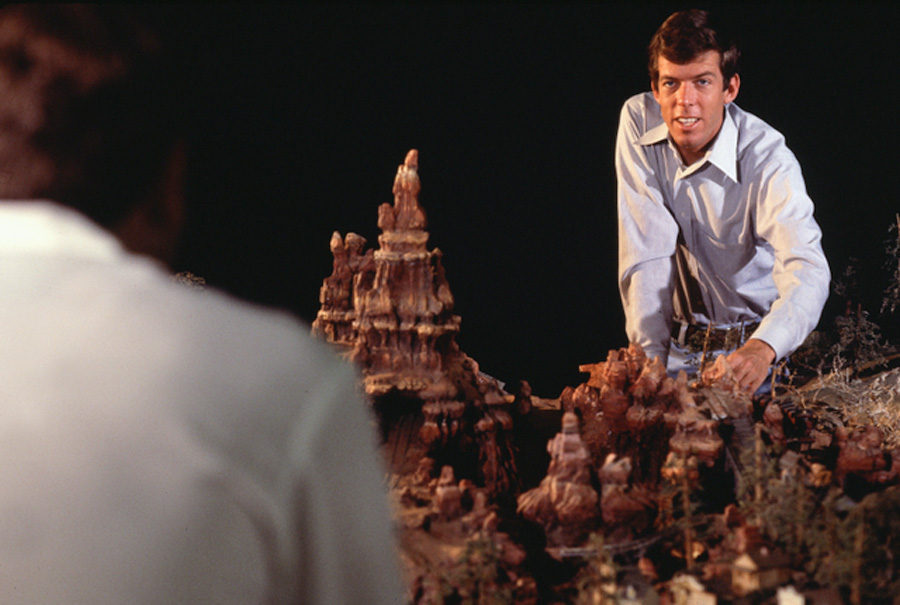
Baxter’s plan to revitalize Frontierland and make it relevant again (even if its dusty, idling historic subject wasn’t) was big… Big Thunder Mountain would change everything, helping cement Disney Parks’ de facto style in the ’70s: steel thrill rides disguised with Disney craftsmanship. Big Thunder Mountain was a hit., and would go on to become a Disney Parks standard.
Just as Big Thunder Mountain opened in 1979, designers were putting the finishing touches on the plans for Tokyo Disneyland. Despite their efforts, the Oriental Land Company (who owns, operates, and oversees the Tokyo Disney Resort) was clear: they did not want their Disneyland to be fine-tuned for Tokyo; they did not want a Japanese Fantasyland or a Japanese Tomorrowland… They wanted Magic Kingdom, with its Western influences and heavy Americana left intact.
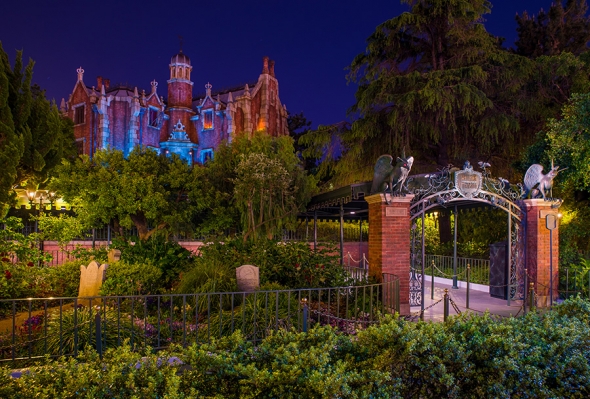
So, the park opened in 1983 with a copy of Florida’s American colonial exterior Haunted Mansion. The only change? Given Japanese culture’s association with ghosts, Tokyo Disneyland’s Haunted Mansion was placed in Fantasyland and embellished with some “fantasy” elements, like griffon statues, shattered windows, overgrown gardens, a beautiful redbrick caretaker’s gatehouse built into a rockface, and an impressive collection of crypts.
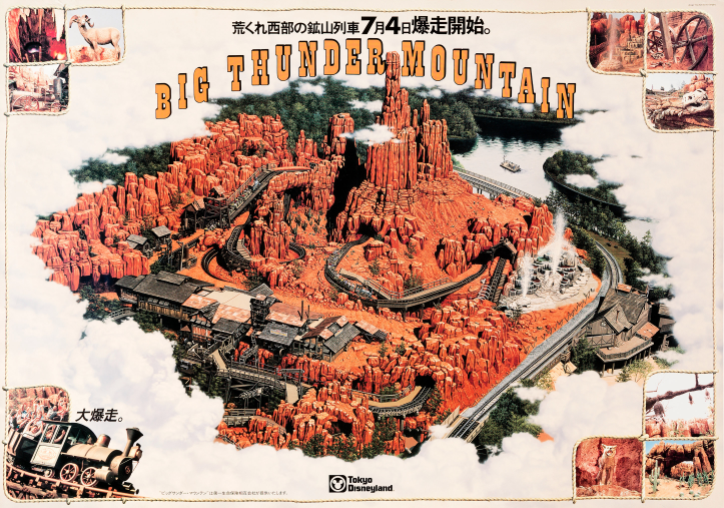
Though Tokyo Disneyland initially opened without Big Thunder Mountain, the ride topped OLC’s wish list and became a must-have for the park’s next expansion. Ultimately, Tokyo’s Big Thunder opened in 1987 – like in California and Florida, becoming the anchor of Westernland.
In Tokyo, Disney Imagineers had it easy. Per the request of the park’s OLC owners, the park opened as (and largely remains to this day) a pleasant but practical high-capacity clone of Magic Kingdom with dashes of Disneyland thrown in.

No customizations necessary, Tokyo Disneyland guests merrily stroll through a Space Age Tomorrowland reigned over by Space Mountain, a dusty Frontierland of the American Old West eventually gaining Big Thunder Mountain, and even a New Orleans streetscape from which Pirates of the Caribbean departs.
Tokyo Disneyland had spoiled Walt Disney Productions. In their next international attempt, Disney would meet… well… la résistance.
La résistance
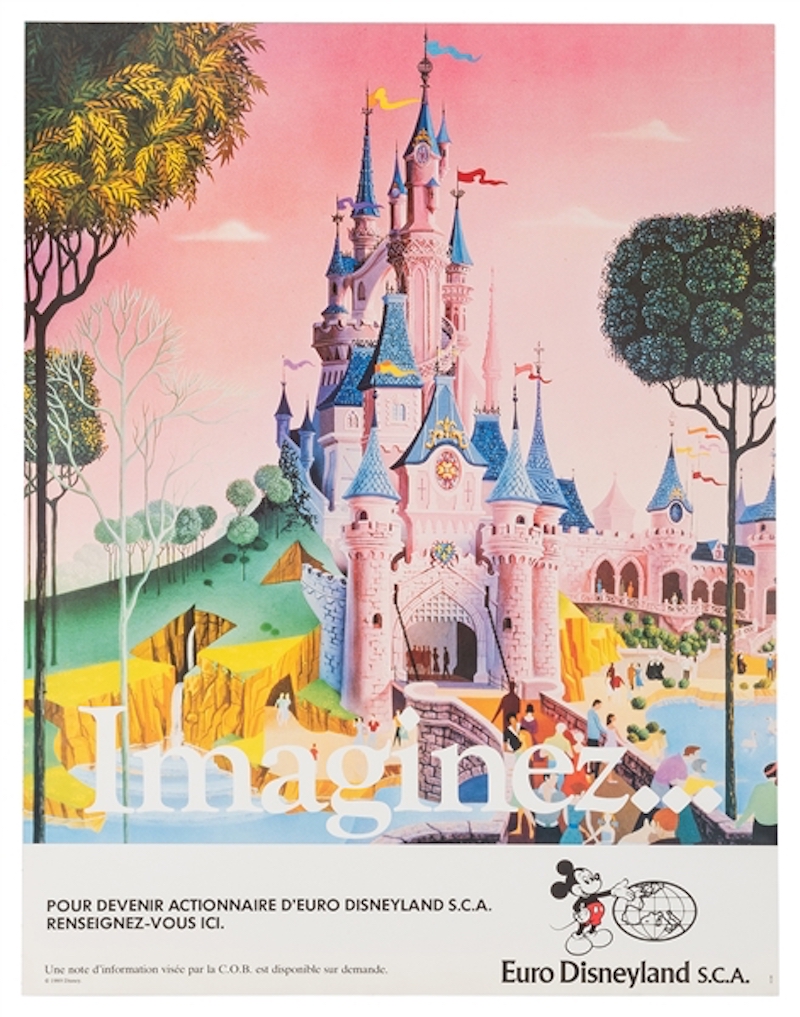
By time Disney decided to build their EuroDisneyland in the quaint, rural village Marne-la-Vallée outside of Paris, the French had already primed their pitchforks. With a fervor and fury matching that leveled against the Eiffel Tower a century earlier, critics descended on the planned Parisian resort. Before construction had started, the media had decreed the park a “cultural Chernobyl” and an invasion of American consumerism and imperialism.
Disney was criticized (probably fairly) for requiring English to be spoken at all corporate meetings. Even moreso, for enforcing the same Cast Member appearance code standards required in the American parks, which the French considered “an attack on individual liberties” (illegal under French law unless it could be demonstrated that the restrictions were requisite to the job and did not exceed what was necessary… Instead of relenting, Disney countered that the restrictions were necessary in maintaining their brand identity).

And at face value, those criticisms were probably right… Think of Walt’s Disneyland – a Tomorrowland stylized as a mid-century Space Age utopia of Americana; a Frontierland angled around American heritage and the pop culture fascinations of the ’50s; an Adventureland entirely imagined around American’s obsessions with African exoticism and the ’60s Tiki Craze… Disneyland is Americana incarnate!
A journalist at the center-right French newspaper “Le Figaro” wrote, “I wish with all my heart that the rebels would set fire to [Euro]Disneyland.”
EuroDisney felt doomed… Except that Disney had an answer.
Found in translation
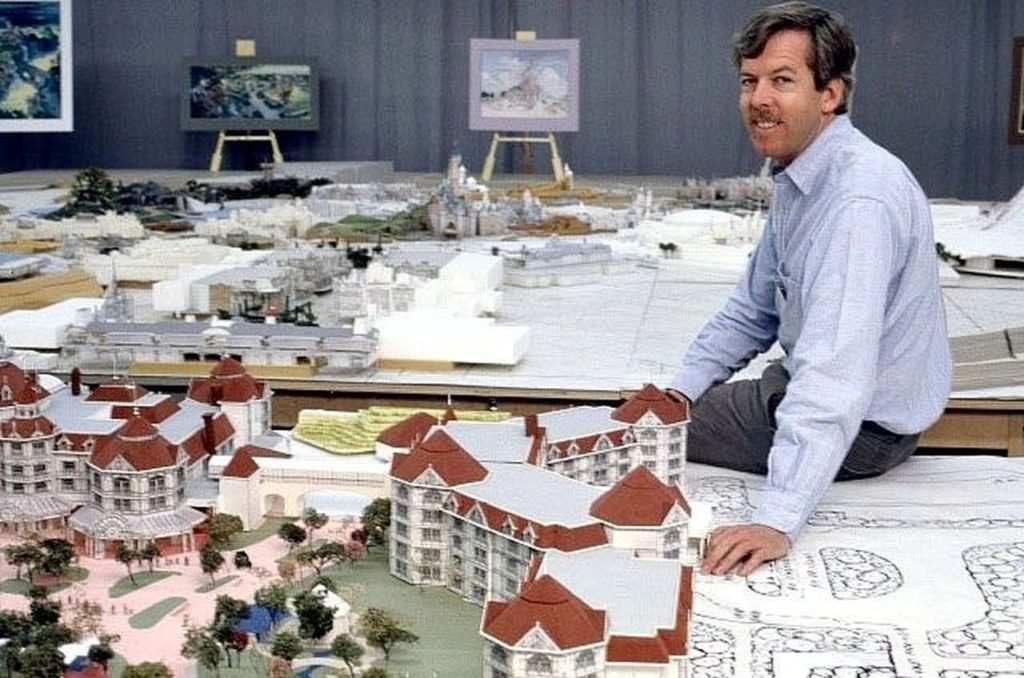
Despite the protests that flared around EuroDisneyland from the moment of its announcement, Imagineers had carefully considered what it would mean to bring a Disneyland to Paris. That’s why there was no better person to translate the inherently-American Disneyland for European audiences than beloved Imagineer and Disney Legend Tony Baxter.
Yes, the young Imagineer who’d crafted Big Thunder Mountain in the ’70s had gone on in the ’80s to create the Lost Legends: Journey into Imagination (1983), Star Tours (1987), and Splash Mountain (1989), not to mention the never-built Possibilityland: Discovery Bay.
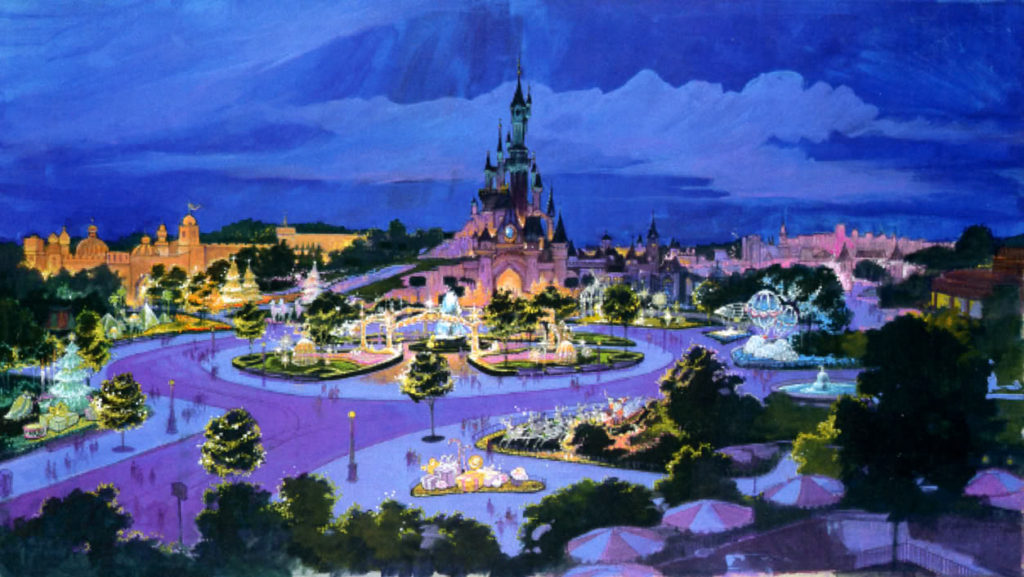
And in EuroDisneyland – at last! – designers would be freed from the tethers of “the hard facts that created America.” With the chains of historical reverence broken, Paris’ Disneyland could at last do what Anaheim’s and Orlando’s merely promised in marketing: it could be a fantasy, drenched in literary allusions, stylized storytelling, and romanticized wonder befitting Baxter’s portfolio.
He was joined by a core team of designers who would each take on one of the park’s five lands – Main Street, Adventure, Frontier, Fantasy, and Discovery – with the express intent of creating not just the most romantic, detailed, and fantastic Disneyland yet, but the most pallatable for French sensibilities. The goal of each? To reimagine the tropes associated with Disneyland and to focus on timeless, literary, romanticized, and idealized times, places, and tales that would be inspiring and exciting for Europeans… including reimagining classic rides to fit in these surprising new contexts.
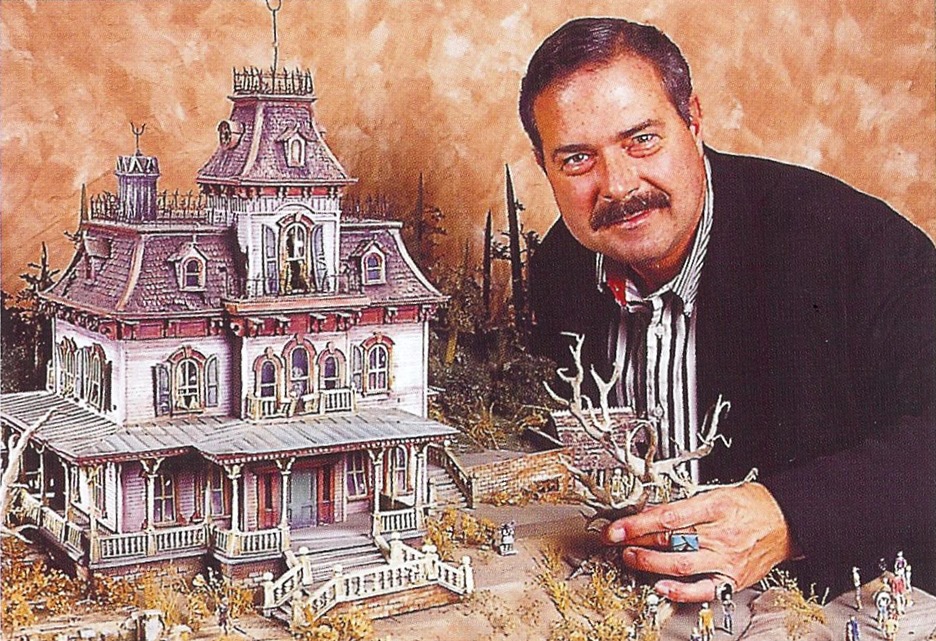
Imagineer Jeff Burke expressed interest in merging the lore of the Haunted Mansion with a new setting in the Old West. Baxter handed him the park’s Frontierland project entirely.
You have to imagine that for Jeff, the pressure was on. How does one go about adapting one of the world’s most well-known and well-loved Disney attractions? What has to stay? What can go? How do you layer the kinds of romance and drama and intrigue that European audiences demand? And better yet, how do you do it in a land seemingly at odds with the attempts to downplay Americana?
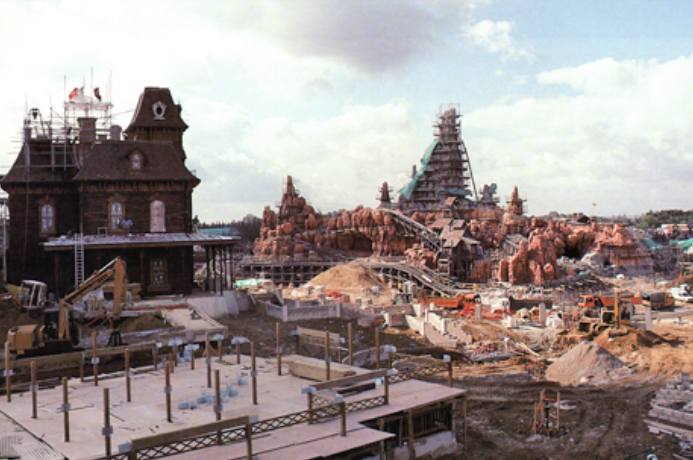
It was official. The world’s fourth Disneyland would have a fourth Haunted Mansion, and in a fourth new land and context. It would also gain a new name – Phantom Manor (multi-lingual friendly given it’s a cognate for the French “Fantôme Manoir”). To keep the ride accessible for English, French, German, Spanish, and Italian language audiences that would frequent the park, it would also axe a “Ghost Host” narrator.
Instead, Phantom Manor would be brought to life by its Setting, Sound, and Story… On the next page, we’ll untangle the tale of Thunder Mesa…


